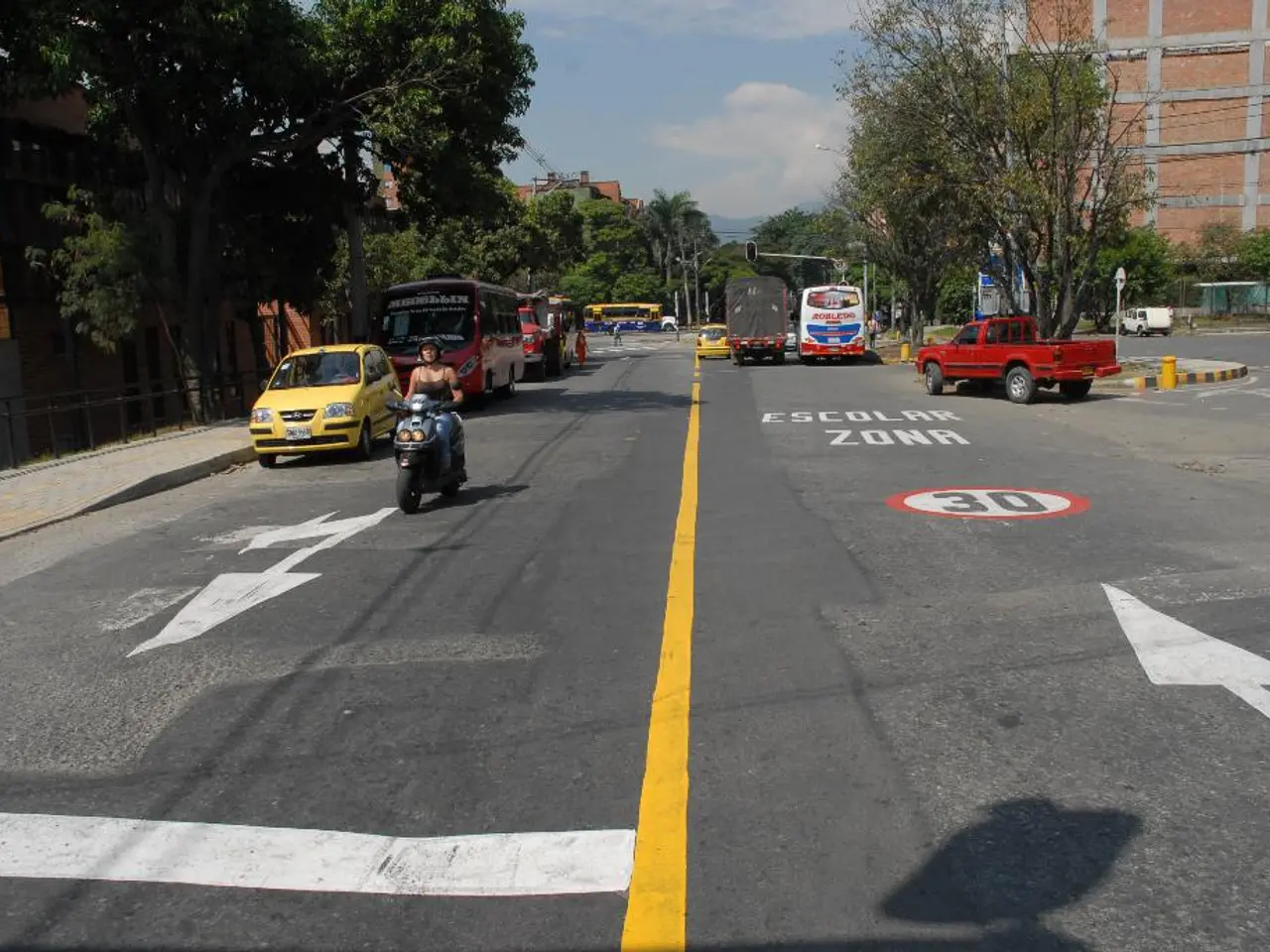One-Half of Collisions at Intersections Involve Left Turns, Raising Question of Potential Ban
In a bid to enhance road safety and traffic flow, several major U.S. cities have taken significant steps to limit left turns at intersections. This move is motivated by the fact that left-turn manoeuvres are associated with a high risk of collisions and inefficiencies in urban areas.
One key measure is the outright restriction or banning of left turns at intersections. Cities such as San Francisco, Salt Lake City, and Birmingham, Alabama, have implemented this strategy due to the involvement of left turns in over 60% of intersection collisions. By eliminating these dangerous angle crashes that occur when left-turning vehicles cross oncoming traffic and reducing pedestrian-vehicle conflicts, these restrictions have proven effective in improving road safety [1][3][5].
Another strategy is the implementation of roundabouts, an alternative to traditional intersections with left turns. Roundabouts, which feature traffic moving in a circle and eliminating the need for left turns across opposing traffic streams, have shown to enhance safety and reduce congestion [1].
In addition, some cities have upgraded traffic signals with protected left-turn phases, allowing left turns only when it is safe, thereby minimising conflicts. These upgrades often involve smart traffic management systems that adjust signal timing based on traffic conditions, reducing risky left-turn manoeuvres and enhancing overall safety [4][2].
The adoption of AI-driven traffic systems is another noteworthy development. These systems monitor intersections and adjust light timing dynamically to prevent accidents. For instance, AI can extend yellow lights or modify left-turn phases in real-time at high-risk intersections. They also detect near-misses and dangerous driving behaviours, enabling proactive interventions before crashes occur [2].
Restricting left turns during peak hours is another approach that some cities have taken. This strategy balances safety, traffic flow, and travel distance efficiency by reducing delays and fuel consumption caused by left-turn waits while maintaining access during less congested periods [5].
The benefits of these measures, including improved traffic flow, fuel efficiency, and increased road safety, are becoming increasingly apparent as people adjust to the new strategies. Furthermore, fleets like UPS are routing their vehicles to avoid left turns for less idling and fewer stops, contributing to these improvements.
This article is republished from The Conversation under a Creative Commons license. SciLine, a free service that helps journalists include scientific evidence and experts in their news stories, provides valuable assistance in this regard.
In conclusion, the strategies of restricting left turns, managing them through infrastructure redesign, and implementing advanced traffic control systems have demonstrated their potential in reducing intersection collisions, improving traffic flow, lowering emissions, and enabling safer pedestrian crossings. These measures have led to faster, safer commutes and significant public safety benefits in the cities that have adopted them [1][3][5][2].
- The science behind traffic management has led to the development of AI-driven traffic systems, which monitor intersections and adjust light timing dynamically to prevent accidents.
- In the realm of health and lifestyle, some industries, such as transportation, are taking proactive measures to ensure safer pedestrian crossings, like implementing roundabouts and upgrading traffic signals with protected left-turn phases.
- The finance sector and the space industry are not typically associated with road safety, but they play a role in this context through investments in research and development of advanced traffic control systems.
- While the primary focus is on enhancing road safety and traffic flow, these strategies also have broader implications for the environment, such as lowering emissions by reducing idling and fuel consumption caused by left-turn waits.




